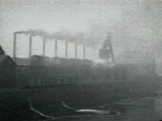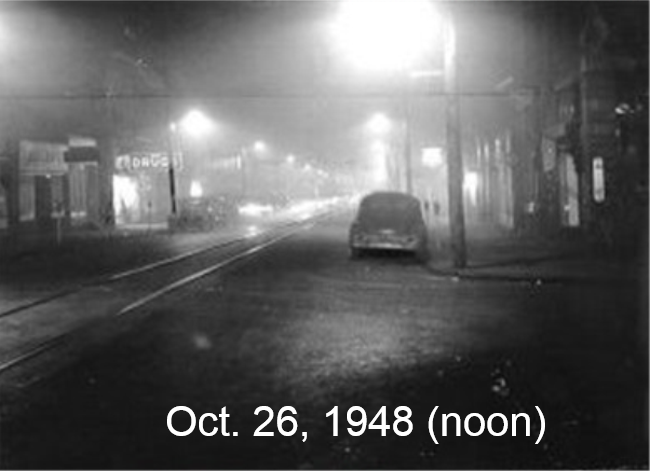Donora, PA - Oct. 26-31, 1948: A temperature inversion trapped a blanket of pollution containing sulfur dioxide, carbon monoxide and metal dust that came from the smokestacks of the local zinc smelter where most of the town worked. Twenty people died, and over 7,000 were hospitalized or became ill as the result of severe air pollution over Donora.
An eyewitness account:
"By Friday evening (Oct. 2), local residents were crowding into nearby hospitals and dozens of calls were made to the area's eight physicians. While Fire Department volunteers administered oxygen to those unable to breathe, Board of Health member Dr. William Rongaus led an ambulance by foot through darkened streets to ferry the dead and dying to hospitals or on to a temporary morgue. On Rongaus's advice, those with chronic heart or respiratory ailments began to leave town late Friday evening, but before noon on Saturday, 11 people died. Conditions had not improved by Saturday night, and with roads congested by smog and traffic, evacuation became impossible. The company operating the Donora Zinc Works finally ordered the plant shut down at 6 a.m. Sunday morning. By mid- day Sunday, rain had dispersed the smog."


London, 1952
A temperature inversion was also responsible for a similar event in London in 1952. In the aftermath of World War II Londoners were burning a lot of sulfur-rich coal. A temperature inversion trapped air pollution which was rich in sulfur dioxide for five days. Visibility was near zero for two days as shown in the photo of a bus taken at midday.
The graph on on the far right shows the concentration of SO2 in the air over time. The peak death rate coincided with the peak in SO2 concentration, but the death rate remained elevated for several months. Eventually, 12,000 deaths were attributed to the episode.

